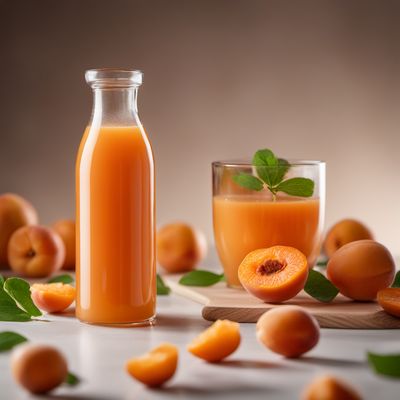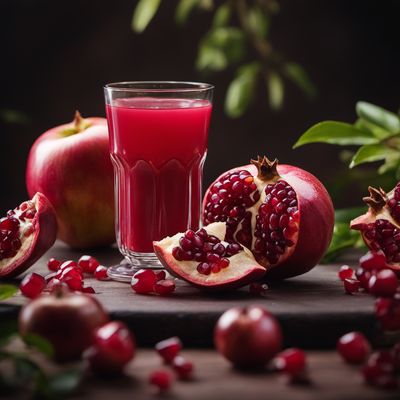
Ingredient
Juice, nectarine
"The Golden Elixir: Unleashing the Vibrant Flavors of Nectarine Juice"
Nectarine juice is a vibrant and luscious liquid that embodies the essence of ripe nectarines. It is typically made by extracting the juice from the succulent flesh of these stone fruits. The juice has a smooth and velvety texture, with a rich golden color that mirrors the fruit's radiant hue. Its taste is a harmonious blend of sweetness and tanginess, with subtle floral undertones. The juice offers a refreshing mouthfeel, leaving a lingering fruity aftertaste that is both satisfying and invigorating.
Origins and history
Nectarines, and consequently nectarine juice, have a fascinating history that dates back to ancient China. Believed to have originated in the region, nectarines were highly prized for their exquisite flavor and were considered a symbol of good luck and prosperity. The fruit eventually made its way to Europe, where it gained popularity during the Renaissance. Today, nectarines are widely cultivated in various parts of the world, including the United States, Spain, and Italy.
Nutritional information
Nectarine juice is a rich source of essential vitamins and minerals, including vitamin C, vitamin A, potassium, and dietary fiber. It is also low in calories, making it a healthy choice for those watching their calorie intake.
Allergens
Nectarines are known to belong to the same family as peaches, and individuals with peach allergies may also be allergic to nectarines and nectarine juice.
How to select
When selecting nectarine juice, opt for brands that use fresh, ripe nectarines as the main ingredient. Look for juices that are free from additives, preservatives, and artificial sweeteners. Check the label for the percentage of nectarine juice content, aiming for higher percentages for a more authentic flavor.
Storage recommendations
To maintain the freshness and quality of nectarine juice, store it in a tightly sealed container in the refrigerator. Consume it within 3-4 days to enjoy its optimal flavor and nutritional benefits.
How to produce
To produce nectarine juice at home, start by selecting ripe nectarines. Wash and remove the pits from the fruit, then blend the flesh in a high-speed blender until smooth. Strain the blended mixture through a fine-mesh sieve or cheesecloth to remove any pulp or solids. Refrigerate the juice for a refreshing and homemade treat.
Preparation tips
Nectarine juice can be enjoyed on its own as a refreshing beverage or used as a base for various culinary creations. It can be incorporated into smoothies, cocktails, popsicles, or even used as a flavorful addition to sauces and dressings. For an extra twist, try adding a splash of nectarine juice to sparkling water or use it as a marinade for grilled meats or vegetables.
Culinary uses
Nectarine juice is a versatile ingredient that can be used in a variety of culinary applications. It can be enjoyed as a standalone beverage, used as a base for smoothies, incorporated into cocktails, or added to sauces and dressings to enhance their flavor profile. Its sweet and tangy taste pairs well with both savory and sweet dishes, making it a delightful addition to a wide range of recipes.
Availability
Nectarine juice is commonly available in regions where nectarines are cultivated, such as the United States, Spain, Italy, and other countries with suitable climates for growing nectarines.
More ingredients from this category » Browse all

Juice, black currant
The Dark Elixir

Juice, elderberry
The Immunity Booster

Juice, peach
"The Golden Elixir: Unleashing the Sweet Essence of Peaches"

Juice, red currant
Tangy Elixir: Unleash the Vibrant Flavors of Red Currant

Juice, guava
"Tropical Delight: Exploring the Exotic Flavors of Guava Juice"

Juice, apricot
Apricot Juice: A Burst of Sweetness

Juice, blackberry
The Dark Elixir

Juice, pomegranate
"The Ruby Elixir: Unveiling the Secrets of Pomegranate Juice"

Juice, cranberry
Tart Elixir: Unveiling the Vibrant World of Cranberry Juice

Juice, orange
"The Zesty Elixir: Unleashing the Vibrant Flavors of Freshly Squeezed Orange Juice"

Juice, prune
The Sweet and Tangy Elixir of Prune Juice

Juice, grapefruit
Tangy Citrus Burst